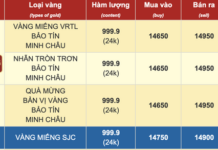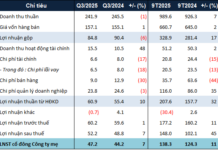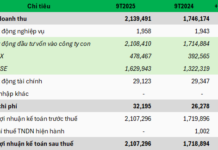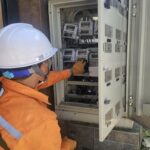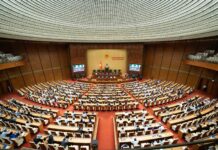The Ministry of Industry and Trade emphasizes that a critical step in implementing Resolution 70, issued by the Politburo in 2025, is to accelerate the adoption of the two-part electricity pricing mechanism. This resolution aims to ensure national energy security by 2030, with a vision extending to 2045.
Implementation Starting January 2026
Minister of Industry and Trade, Nguyen Hong Dien, has directed the application of the two-part electricity pricing mechanism for high-volume electricity consumers, effective from January 1, 2026. Until the end of 2025, the electricity sector will issue dual invoices: one based on the current mechanism for actual payments and another based on the two-part mechanism for customer reference and adjustment. “There’s no time to delay. This is the collective will of the entire sector. With a solid political and legal foundation, decisive action is now imperative,” Minister Dien stressed.
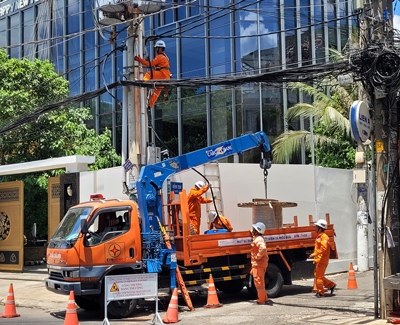
Maintenance of the power grid in Ho Chi Minh City. Photo: TAN THANH |
The Minister also instructed the electricity sector to assess the impact of the two-part pricing mechanism. “Vietnam Electricity (EVN) must take the lead, proposing a framework for price calculation that ensures accurate, comprehensive, and inclusive cost coverage in electricity production and distribution, including transmission costs,” stated Mr. Dien.
The two-part electricity pricing mechanism consists of charges for both the subscribed capacity and the actual energy consumed. This contrasts with the current single-part mechanism, which bases charges solely on energy consumption. According to the Electricity Regulatory Authority, the current tiered pricing system primarily reflects energy consumption and does not accurately represent the true cost of electricity for different consumer groups.
In practice, this system results in cross-subsidization among consumer groups. Households consuming more electricity face higher rates, while other consumers, particularly in the industrial sector, benefit from this disparity.
Nguyen Anh Tuan, CEO of EVN, highlighted the necessity of transitioning from a single-part to a two-part mechanism to accurately capture the electricity sector’s costs, including infrastructure maintenance (generation and transmission) and energy costs. This transition will ensure pricing reflects consumer behavior more accurately, promoting transparency, fairness, and efficient energy use. However, as this is an unprecedented change in Vietnam, thorough research and impact assessment are essential before implementation.
Mr. Tuan suggested initially applying the mechanism only to large industrial consumers with monthly consumption exceeding 200,000 kWh and connected to a voltage level of 22 kV or higher (eligible for the Direct Power Purchase Agreement – DPPA). Residential consumers would be excluded initially due to the need for complete meter system upgrades.
Avoiding Hasty Implementation
Bui Van Thinh, Chairman of the Binh Thuan Wind and Solar Energy Association, supports the two-part pricing mechanism within the direct power purchase framework. However, he notes significant challenges in calculating transmission costs and determining the final price for consumers. Mr. Thinh likened the electricity sector to building a “road” for consumers. Whether the road is used or not, the construction and maintenance costs (capacity) must be covered. If electricity is consumed, an additional charge for energy usage is applied. Thus, the two-part mechanism may not result in lower prices as expected.
Pham Dang An, Deputy CEO of Vu Phong Energy Group, noted that many anticipate lower electricity prices with the two-part mechanism. However, maintaining low prices long-term is unsustainable, as the sector requires resources for reinvestment and energy security. Mr. An cited international examples, such as France, emphasizing the need for a clear roadmap and avoiding rushed implementation. “A free electricity market can only be sustainable if it balances facilitation with risk management. It’s crucial to communicate that the two-part mechanism aims for transparency, fairness, and sustainability, not immediate price reductions,” Mr. An explained.
Associate Professor Tran Van Binh from Hanoi University of Science and Technology analyzed that a single-price system leads to inefficiencies. He illustrated with an example of two households: one with a 24 kW subscription using 1 hour daily (24 kWh total) and another with a 1 kW subscription using electricity continuously for 24 hours (also 24 kWh). Charging both the same rate would be unfair, as the sector’s capacity investment costs differ. Therefore, separating charges into capacity and energy components is essential. “Accurately identifying pilot consumer groups is key to ensuring transparency and efficiency,” he emphasized.
Experts predict that in the short term, electricity prices for production and business may rise slightly as cross-subsidies are eliminated. However, long-term stability, transparent pricing, and increased competition will encourage energy efficiency and align with global trends, as many countries have adopted similar mechanisms.
|
Consumers Can Request Meter Calibration Regarding high electricity bills, some consumers wish to install additional meters. Nguyen Quoc Dung, Head of the Business Department at EVN, confirmed that consumers can install extra meters for monitoring, as permitted by law. However, each meter has an allowable error margin of ±1%. “All measurements have inherent errors. Meters must be calibrated by authorized agencies. Even calibrated meters may show slight discrepancies,” he noted. Consumers suspecting meter inaccuracies can request calibration. If the meter is faulty, the electricity sector will compensate; otherwise, consumers bear the calibration costs. |
LE THUY
– 07:40 13/09/2025
“Proposed Residential Electricity Pricing: Time-of-Use Tariffs vs. Tiered Rates – The Ministry of Industry and Trade Responds”
The Ministry of Industry and Trade has responded to the National Assembly delegation of Dong Nai province’s proposal to implement a time-of-use (TOU) pricing structure for residential electricity rates.
The Politburo: Steering Ninh Thuan’s Dual Nuclear Power Projects for 2030-2035
With an emphasis on expedience, the political resolution underscores the imperative to fast-track the development of the Ninh Thuan 1 and Ninh Thuan 2 nuclear power projects. The resolution envisions bringing these projects online during the 2030-2035 period, marking a significant milestone in the nation’s energy landscape.
Defiant Asian Nation Retorts: ‘We Will Source From the Best Deal, Despite US Tariffs on Russian Oil’
India remains steadfast in its stance to procure oil from “wherever the best deals are,” unfazed by pressure exerted by the United States.










